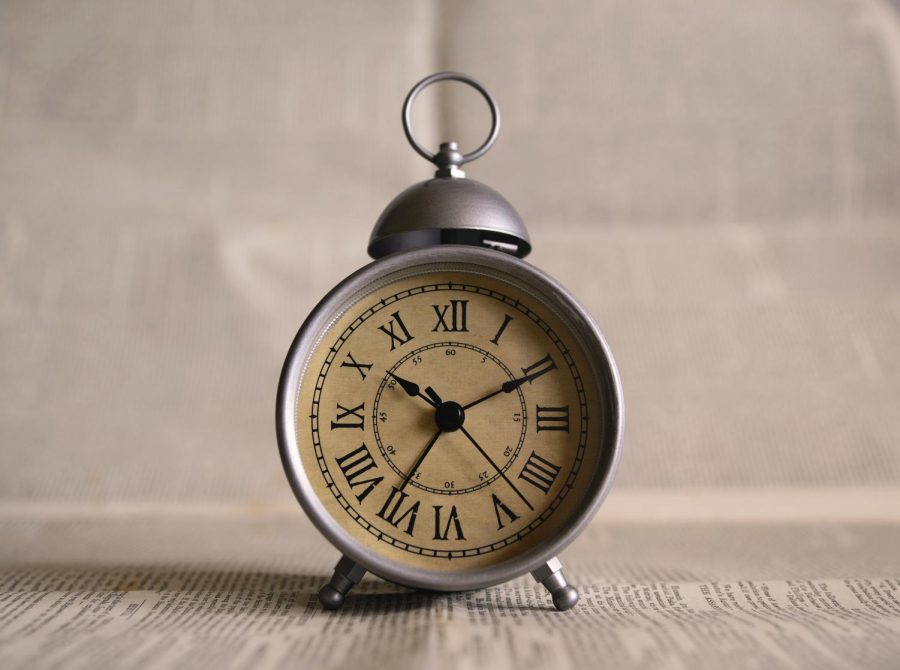Should Daylight Saving Time be Permanent?
A clock showing the time during the mid-day when the light is up
Twice a year, Americans switch their clocks to make better use of daylight. Governments instituted this idea to save energy and to not waste mornings by sleeping through daylight.
While Congress says we should no longer change our clocks twice annually and that daylight savings time should be permanent, in the 1970s, experiments were conducted which prove the premise that daylight savings doesn’t work.
In the wake of an energy crisis in 1973, US Congress tried year-round daylight savings. The idea was to save energy by having sunlight in the evening .
Even though year-round daylight saving was originally agreed to be a good idea, it quickly declined in popularity because no one wanted to go to work and school in the pitch black.
Based on the data, pre-sunrise fatalities rose by two people from the previous year with one percent of energy savings noted and fewer accidents reported in the afternoon. With the data showing that energy savings were negligible, and the period of darkness becoming increasingly unpopular, the idea of year-round daylight savings was abolished in 1975.
The modern model of daylight saving was formed in 1966 through the Uniform Time Act which standardized time change throughout specific time-zones. This act stated that clocks would move forward an hour during the last Sunday of April and move back during the last Sunday of October.
Today, daylight saving time begins the second Sunday of March and ends the first Sunday of November. Since this current model’s enactment, however, increasing frustration has been expressed with its impact on our circadian clocks, causing the United States Senate to once again look into the effects of the time change.
The Sunshine Protection Act, created in response to disruption Americans feel the time change creates, argues that a permanent daylight saving time increases economic productivity, leads to greater energy savings, less seasonal depression, and more frequent exercise.
In the Senate, an optimistic and strong response from United States Senator for Massachusetts, Edward Markey led to the bill being pushed forward.
“No more switching clocks,” Markey said. “More daylight hours to spend outside after school and after work, and more smiles — that is what we get with permanent Daylight Savings Time.”
When asked about his thoughts on instituting daylight saving time permanently, senior Tieran Hawkins felt inclined towards the permanent model.
“I don’t know if changing my clock really affected me at all,” Hawkins said. “But I do like it being light later. It gives me a lot more time where I can work outside. I would much prefer having a permanent daylight savings time.”
Sleep experts such as professor of distinction and associate chair for integrative physiology at CU Boulder, Ken Wright, argue that a permanent daylight saving time is poorly substantiated.
“As a population, we’ll be waking up more often in the darkness,” Wright said. “ When we get exposed to light at night, whether it be more sunlight or lights inside our house or on our devices, that sends a signal to our circadian clock that we should go to bed later and wake up later.
Health Teacher Liz Kaempf agrees with Ken Wright’s perspective.
“The circadian rhythm is the 24-hour cycle that regulates bodily functions,” she said. “It is our internal clock that helps control when we sleep and when we are awake, plus other bodily functions. During the day, light exposure sends a signal to our internal clock to be awake and active. At night time, the internal clock initiates the production of melatonin which is a hormone that promotes sleep.”
Kaempf then mentions trends amongst people who do not maintain healthy sleep and circadian cycles.
“Later sleep timing is associated with more substance use and physical and mental health problems, including obesity, depression and heart disease. It’s also associated with morning sleepiness, which contributes to accidents, poor work productivity and poor school performance.”
Instead of a permanent daylight saving time, experts are arguing for a permanent standard savings time. Dr. Beth Malow, a neurologist at Vanderbilt University Medical Center, believes that a permanent standard saving time is a better option.
“It’s called standard time because it lines up with our natural, biological rhythms,” Malow said. “Permanent standard time with sunnier mornings and darker evenings would be healthier, especially for front-line workers and school students with early waking hours.
Although Congresses’ arguments are thoughtful, Malow believes that the conclusion is not as beneficial to US citizens’ health as believed.
“I commend the subcommittee for thoughtfully considering changes to daylight savings time including consequences related to the health and well-being of the American people,” Malow said. “I strongly recommend eliminating the transition back and forth to daylight savings time and adopting permanent standard time.”
The Sunshine Protection Act still requires house approval and the signature of president Biden to be put in place and is expected to take effect November 5, 2023.

storytelling is at the forefront of his life, through seeking out new adventures and finding creative ways to describe the world around him. As a young kid, Gus was surrounded with art and
writing and never saw himself doing much of anything else. Through listening to his dad make up crazy stories about made up characters, to walking around OHSU and sitting through
interviews of dental students with his mom, storytelling was always there. This will be Gus’s second year as an editor and writer for the Jesuit Chronicle. In his first year as a Journalism
Student, he learned the fundamentals of Indesign as well as explored topics ranging from the Jesuit administrative policies to food writing. Gus enjoys writing opinions , sharing different
perspectives, and connecting people through stories. He hopes to continue discovering what he loves to write about as well as continue to put passion into his work to connect the Jesuit
community through stories and discussion. In his free time, Gus enjoys running, cooking, drawing, going on long walks, and being with family.








